Clans and clan ties are a strong pull for a lot of our visitors from the US, Canada and Australia. Many of these visitors are coming to the Highlands to trace their ancestral roots. The local clans here are “Grant” and “Macpherson”. You’ll still find a high number of families with these surnames in the area.
The clan system in Scotland has a fascinating history and has been associated with many famous stories like the Outlander series and Kidnapped by Robert Louis Stevenson. From ancient origins in the Celtic, Norse or Norman-French traditions, by the 13th century, the clans had grown firm roots in the Highlands of Scotland.
While the term ‘clan’ means family or children in Gaelic, not all the member of the same clan were related. The clans lived off the land, with cattle being their main source of wealth. Over time the clan system has been romanticised. Along with border disputes, the prime cause of inter-clan unrest was cattle “reiving”. Cattle were frequently raided if the opportunity presented itself. The most important clan chiefs at this time were part-time kings, protectorates and judges. They held real power over their controlled lands.
The system remained largely intact until the time of the bloody Battle of Culloden in 1746. The royal troops of King George II ruthlessly crushed the rebellion. However, the conflict should not be romanticised. The facts behind the scenes are much more murky than you might think.
By this point, improved trade and communication links between northern and southern clans were already leading to the dilution of the clan system and the infamous Highland Clearances effectively signalled the end as thousands of Scottish land workers sought the promise of a better life on distant shores.
Today, many clans can be traced back to a specific part of Scotland, for example the MacLeods of Skye, the MacNeils of Barra or the MacNabs of St Fillan on Loch Earn. Do you have ancestry in the Highlands? Most clans have a particular tartan associated with them instead of a coat of arms. At the Kilt exhibition in Inverness you can see a huge array of different tartan patterns which have evolved over the years.
Ultimately clans and troops liked to compete. A show of power and strength. In heavy contests, including the hammer throw and weight for height, see competitors putting their muscles to the test, while field events such as the hill race and cycling competition test speed and stamina. Over the centuries, the Heavy Events evolved from military exercises into festivals for the Scottish public. With the addition of dancing, music, food and drink, the Highland Games were born

Abernethy Highland Games
Do you know where the idea of caber tossing orginated? It was part of the logging industry. The lumberjacks would fell the trees and then have to float them down the river to the sawmill. The toss was the most effective way of landing the tree in the river.
Did you know that Baron Coubertin, the founder of the modern Olympics, was so impressed by a Highland display he saw at the 1889 Paris Exhibition that he introduced the hammer throw, shot put and the tug o’ war to his competition? The former two are still included in the Olympics programme to this day however I think it’s time to start a campaign #bringtheolympictugowarback.
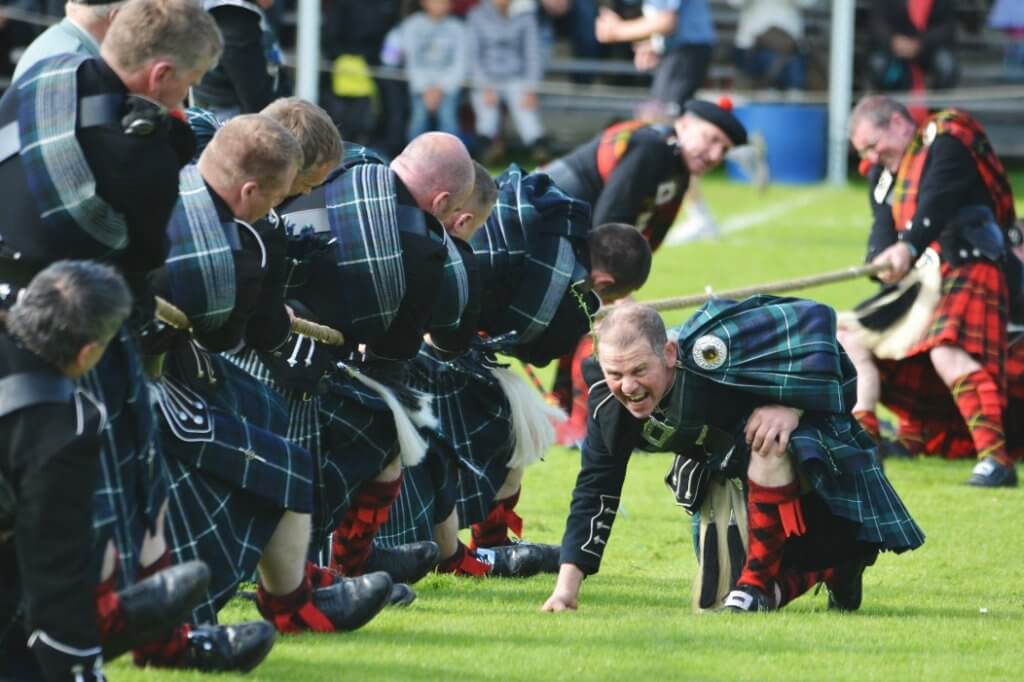
Usually the final event at the Games but always great entertainment
That’s what I think Scotland is most famous for… what do you think?
There are calendars online where you can see lists of dates for all the Highland Games and Gatherings throughout the year. Each one tends to take place on a set date. For example, our closest games (the Abernethy Highland Games), always take place on the 2nd Saturday in August. But if you’re not in the area then, you could always go to Tomintoul, Newtonmore, Braemar or Grantown Games.
The Highland Games are a truly spectacular event. If you do have the chance to attend, it really will be an event to remember. The sound of a mass pipe band is something which will stay for you for a long time and the “heavy” events are properly stunning. Tossing the cabre is uniquely Scottish and we can even boast a local world record holder in the event!
We’ve scheduled our Complete Cairngorms trip in 2025 to run between the Newtonmore Highland Games and the Abernethy Highland Games. When you book the trip, be sure to let us know if you’d like to extend to go to either or both of these events.
What is Scotland famous for? … Tartan and the Kilt
Sounds like a great name for a pub, don’t you think? Tartan was first recorded in Scotland circa 1540, a fabric production and design originating in the Highlands. The fabric is made of twill woven sheep’s wool. The communities are known for their weaving; the fabric is made of a distinctive horizontal and vertical stripes and squares pattern known as a “sett”. The design of these stripes and background colour is also referred to as the tartan. A Scottish fashion statement. In the modern world you can see it featured prominently in interior designs or on the catwalk of Burberry and Vivienne Westwood.
Originally, clans people would maximise their animal stock for warmth and food. The crofters would shear the fleece, spin it into wool fibre and dye it. The multiple colours came from local plants, mosses and berries. Don’t attribute special meaning to any of the original colours. This is all a modern-day myth. One such tale is that red tartans were ‘battle tartans’ designed to mask the colour of bloodshed.
The Kilt is a mysterious piece of clothing. It has been around since the 16th century and is essentially a wraparound skirt for a man. Scottish men have no problem wearing a skirt because, well, they’re Scottish and this is one very important tradition. The kilt is durable and long-lasting; an untailored 5 metre-long a piece of tartan, worn around the waist usually worn with a sporran – a small bag worn around the waist, over the kilt. Sporran is the Gaelic word for purse. A Sgian dubh (pronounced skee-an doo), a small dagger, sits in the sock.
NB If you’re expecting all the men in Scotland to be walking the streets in kilts, you’re going to be disappointed. Kilts are expensive pieces of clothing. As such they are generally reserved for special occasions such as weddings (unless you work as a tourist guide!)
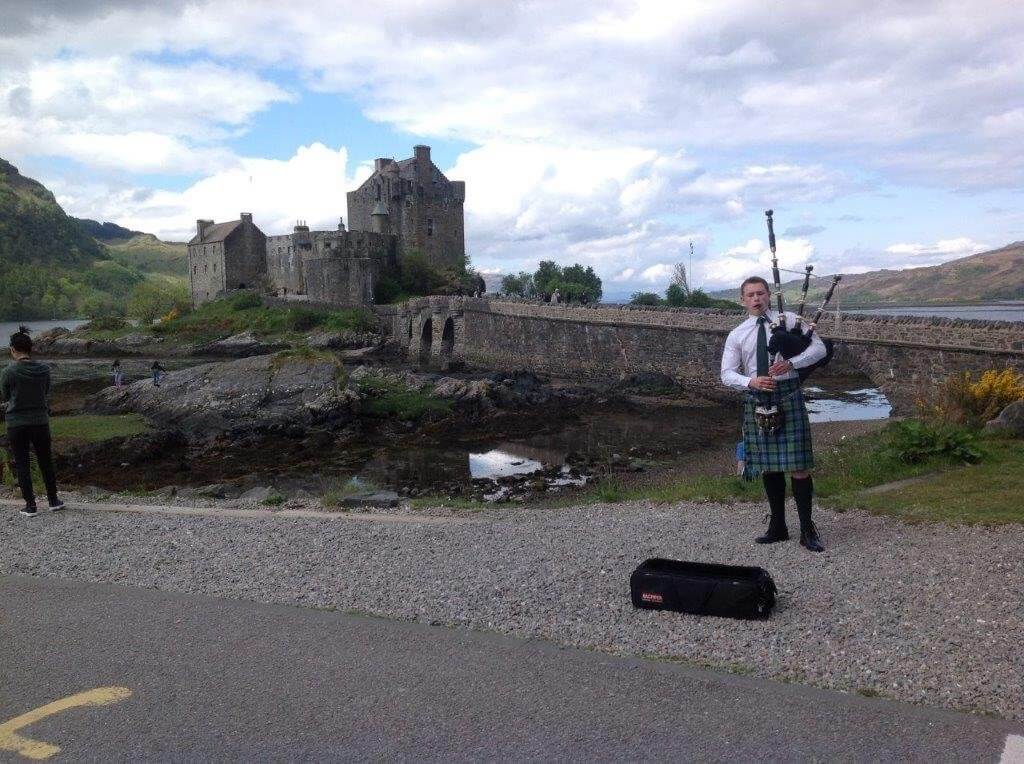
In the past, the long length of fabric was deliberate to enable the wearer to fashion a 3rd of the fabric over the shoulder. This upper section could be adjusted depending on the weather and temperature. The kilt became much more popular in the 21st century after being chosen as uniform by Highland regiments of the British Army.
The naming and registering of clan tartans began in April 1815; the Highland Society of London resolved that all the clan chiefs “be respectfully solicited to furnish the Society with as much of the Tartan of his Lordship’s Clan as will serve to Show the Pattern and to Authenticate the Same by Attaching Thereunto a Card bearing the Impression of his Lordship’s Arms.” Many had no absolute idea of what their tartan might be but were keen to comply and to provide authentic signed and sealed samples.
Today tartan and “clan tartan” is an important part of a Scottish clan. Almost all Scottish clans have several tartans attributed to their name. Several clans have “official” tartans. It is possible for anyone to create a tartan and name it as they wish however the only person with the authority to make a clan’s tartan “official” is the chief. If you’ve a design of your own, you can commission your own tartan. You can even submit it to the Scottish Register of Tartans for approval.
If you’re looking for a specific design of tartan, search through the thousands on the Scottish Register of Tartans’ online collection to find your perfect combination and design. Boat of Garten even has its own tartan. Try Kinloch Anderson, they also have a Heritage Room Museum to see the history of the family over 140 years. Visit the Lochcarron Weavers Shop in Loch Carron in Wester Ross, Highlands.
Would you like to see a kilt being made? There is an exhibition in Inverness. If you visit on a weekday, you will see the kiltmakers at work. If you’re there at a weekend, you’ll have to make do with a video presentation, but it is still quite fascinating to visit the exhibition.
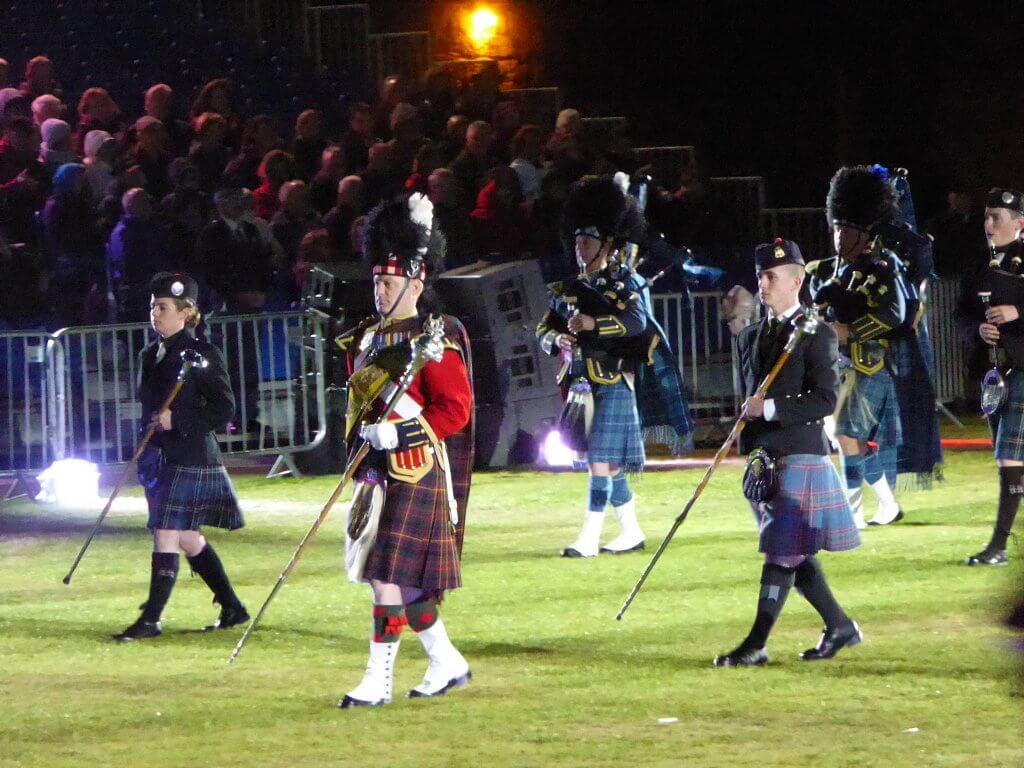
Traditional Scottish kilts are worn in a ceremony.
The very first recorded appearance of the Loch Ness Monster occurred in 565 AD, when a “water beast” attacked one of St. Columba’s followers in the loch. Note, it’s not a lake. Then the not-so-delightful monster went on a holiday.
It is now one of the best modern-day tourist attractions that you’re not actually guaranteed to see!
Our Loch Ness Monster returned and was nicknamed “Nessie”; she first popped up again in 1933 and has been much loved and only a couple of times capture on film. Photographed with her infamous giraffe-like neck peering out of the water… or was it a stick? Unfortunately, even though we’ve more cameras and smartphones visit Loch Ness than ever, we’ve no new photos for decades. Come on, Nessie, we want to see you again.
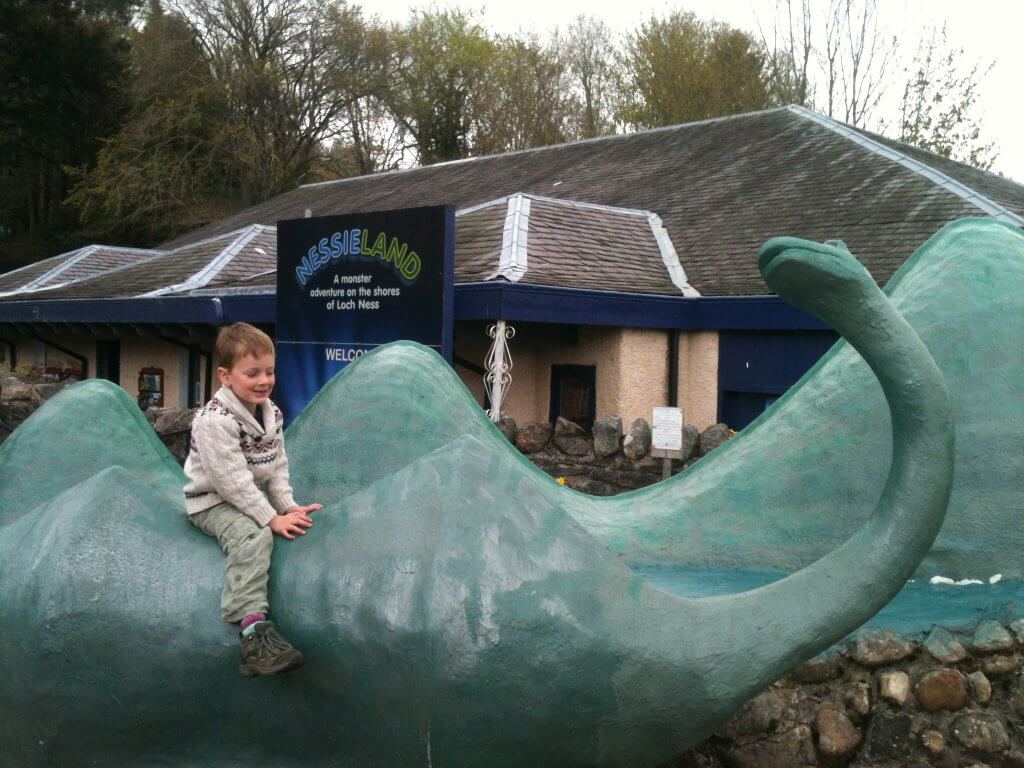
Obviously not the real deal – but perhaps the closest we’ll get to the legend herself
salmon – whisky – castles – golf – textiles – shellfish – military Tattoo – Edinburgh Festival – music – bagpipes and many more
Scotland famous for textiles – Scotland’s textiles are famous all over the world, not least of all for the kilt (a Highland tradition dating back to the 16th century!) and contemporaries who continue to produce some of the world’s finest fabrics.
Here textiles are as varied as they are practical. In the Cairngorms we certainly find wildlife stalkers are prone to camouflaging tweed, while walkers often go for the synthetics. Pro tip: don’t miss out on the versatility of wool; it keeps you warm when wet, wicks away sweat and can take weeks before needing a wash.
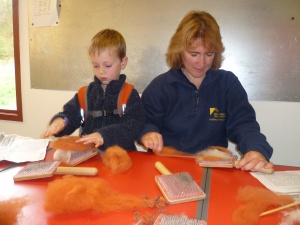
Carding wool at Knockando, great activity for kids!
The must sees of the textile industry include the Scottish Borders, Harris Tweed on the Isle of Harris, Fair Isle knitting between the Shetlands and Orkneys and Johnstons of Elgin based in London who have a free tour of their wool mill every business hour, on the hour.
Scotland textile artists have been making quite a splash in the fashion industry, too. Notables include Angharad McLaren, Lochaven of Scotland in Ayrshire village (known for creating the outfits for Harry Potter’s wizarding school!), Christopher Kane, Jonathan Saunders, Graeme Armour, and more. Another great article on Scotland’s influence in the fashion world is 10 Scottish manufacturers for fashion designers.
In addition, check out a few of our favourite textile and yarn manufactuers in Scotland, namely Keela and Bonar Yarns.
In the Cairngorms we have our very own Knockando Woolmill Trust. This charitable organization has a fully functioning water wheel where you can witness its fascinating process in action, set against a lovely Highland backdrop. You can also browse their garments in shop—check out more of our experience with Knockando and the Scottish Kiltmaker’s Exhibition.
The British Wool Fest in Cumbria and the Inverness Loch Ness Knitting Festival in June and September, respectively, are both wonderfully immersive introductions to textiles, and Rebecca has taken a 3 day weaving course she would highly recommend for beginners and novices.
To learn more about these experiences ask us about our self guided tours, because any quintessential Scottish holiday can’t miss out on its Tartan and Tweed!
Check out more of our adventures at Knockando:
All content © Copyright Scot Mountain Holidays 2025
Responsive web design by Summit Web Solutions